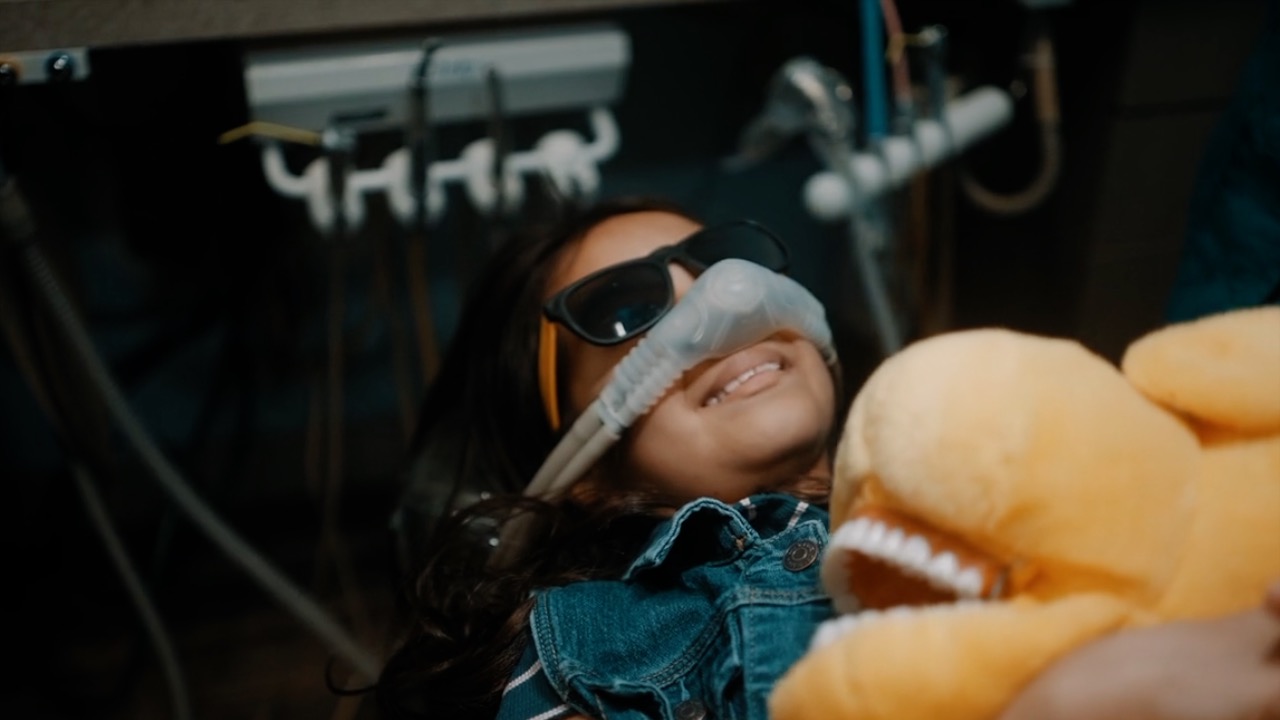Sedation dentistry refers to the use of sedation during dental treatment. Sedation is most commonly used during extensive procedures, for patients with dental phobia or for patients who find it difficult to sit still. There are different types of sedation, including nitrous oxide (“laughing gas”), IV sedation, oral sedatives and general anesthetic.
Sedation dentistry can range from the use of nitrous oxide to calm a patient to general anesthetics used to put patients to sleep. Patients with dental phobia, low pain tolerance, major dental treatment, physical handicaps or strong gag reflexes may require sedation. Procedures like fillings, crowns, bridges, root canals, extractions, cosmetic procedures and periodontal treatments often require sedation.
Sedation is endorsed by the American Dental Association and is an effective way to make many patients comfortable during their dental visit. Before using a sedative or anesthetic, it is important to tell your pediatric dentist about any medications or medical treatments your child is receiving. Before administering any sedative or anesthetic, your pediatric dentist will talk to you about the process of sedation and pre- and post-sedation instructions.
Nitrous Oxide for Sedation Dentistry
Nitrous oxide, more commonly known as laughing gas, is often used as a conscious sedative during a dental visit. The gas is administered with a mixture of oxygen and has a calming effect that helps phobic or anxious patients relax during their dental treatment. Because it is a mild sedative, patients are still conscious and can talk to their pediatric dentist during their visit. After treatment, the nitrous is turned off and oxygen is administered for five to 10 minutes to help flush any remaining gas. The effects wear off almost immediately. Nitrous oxide rarely has side effects, although some patients may experience minor nausea and constipation. Your pediatric dentist will provide you with pre- and post-sedation instructions.
Oral Sedation
Oral sedation is taken by mouth or through the nose as soon as the patient arrives at the appointment, as the medicine usually takes up to 20 minutes to work. Oral sedation doesn’t put patients to sleep, but it helps them stay calm and relaxed. Patients with generalized anxiety, fear of needles and sharp instruments, prior dental trauma, or generalized fear of the dentist can take oral medication in order to reduce their anxieties
IV Sedation and General Anesthesia
IV sedation, also known as conscious sedation, doesn’t fully put you to sleep but it does make you less aware of what is going on around you during your procedure or treatment. IV sedation is administered through intravenously through a vein. IV sedation is usually reserved for patients who are very anxious about a dental visit. It works quickly, it’s easy to adjust the dose given, and the sedative has a long period of amnesia, meaning you won’t remember what happened during your dental visit or treatment.
Under general anesthesia, your child will be completely asleep and pain-free. Specially-trained anesthesia professionals will administer medications and monitor your child while the dentist performs the dental procedure.

